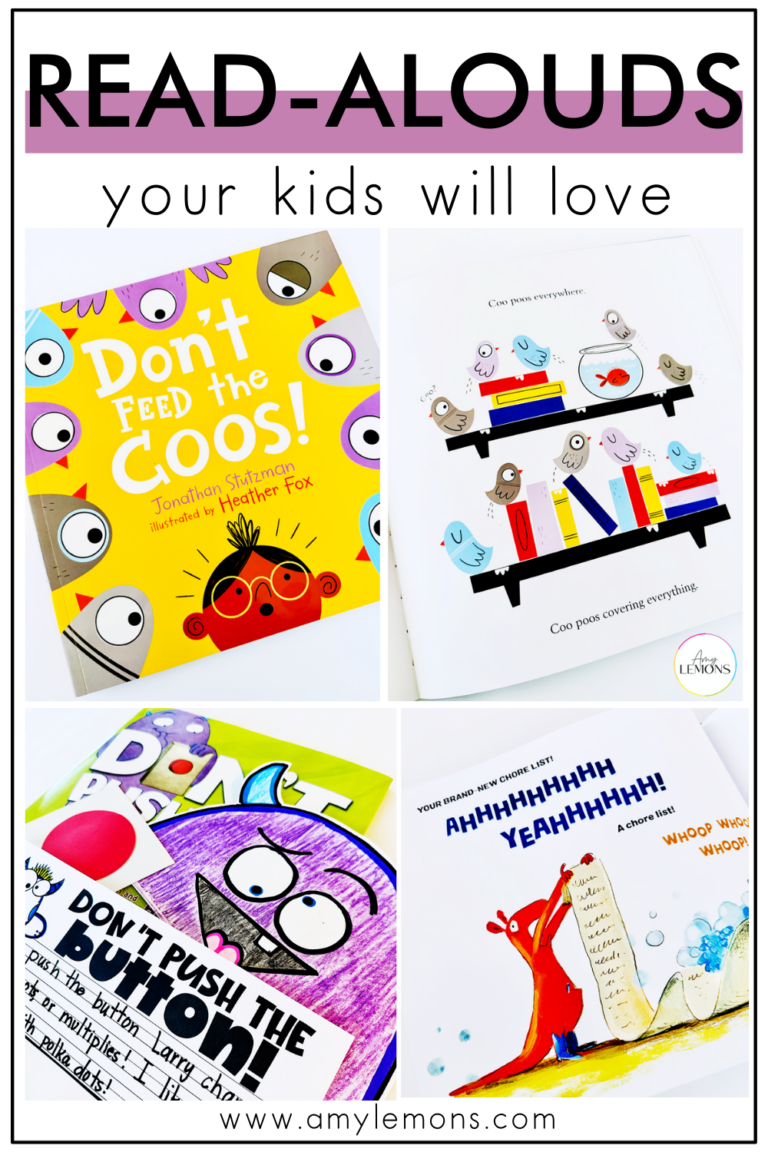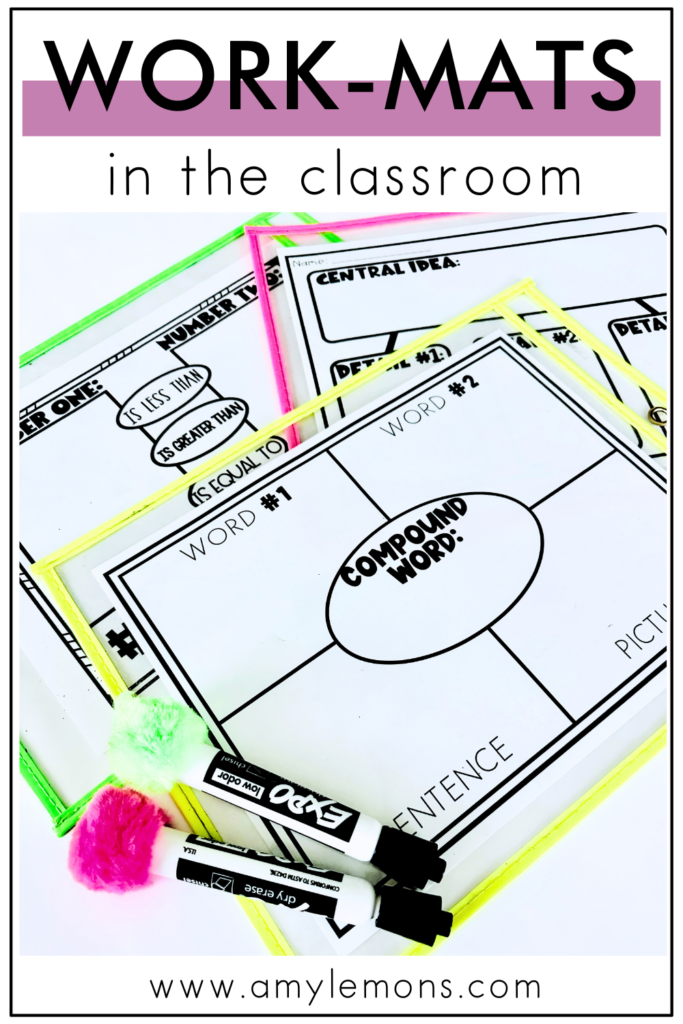

Did you know that work mats are a versatile and effective organizational tool for practice in any subject area? I started using them about a decade ago when I realized that work mats in the classroom provided a way for students to be actively engaged in our mini-lessons.
Before incorporating work mats, I was utilizing whiteboards for student responses. I still love whiteboards, but we all know that teachers need a lot of tricks up their sleeves to keep students actively engaged in the content.
I’m going to share 3 ways that you can incorporate work mats and engage students in lessons that you are already using in the classroom. No need to reinvent the wheel!

When focusing on a grammar concept such as nouns, verbs, adjectives, contractions, or compound words, you can use work mats as a conservative way to engage in word work. They provide a designated space for students to complete their activity keeping their work neatly contained. Plus, the structure of the work mat can keep students focused and on task because it isn’t just one big open space.
For example, students can practice compound words and use their mats to break apart the word, draw an illustration of the word, and use the word within context. This works wonders because students can erase and start over for many different words without wasting a ton of paper.
You can try this compound words work mat activity in your classroom for FREE!
Investing in a sturdy set of work mats is essential to ensure you can reuse them and take advantage of reducing waste. My favorites are these dry-erase pockets, and here’s the dry-erase marker hack I swear by to make erasing and reusing these mats a breeze for students.

One benefit of using work mats in the classroom is they allow for built-in differentiation. They provide a framework for the activity without being too specific.
Not every student will do things the same way, so the work mat gives them space to solve differently.
Teachers can modify the content or layout of the mats to accommodate varying skill levels. This is especially true for work mats and math. Simply assign different levels of numbers or varying equations to meet the individual needs of your students.
Using work mats in math is one of my favorites. I’ve shared 3 other ways to use dry-erase pockets in math.
When introducing or practicing a reading comprehension skill, such as identifying the central idea of a text, it is nice to have a way for students to respond to a variety of texts. However, that can use a lot of paper.
Work mats allow for ample exposure to comprehension skills while not being wasteful.
For instance, you might have students writing at varying levels in your classroom and need a flexible way for them to respond. Using work mats, students can draw pictures, write small phrases, or write in complete sentences. They all complete the same activity, but with tailored responses.
This helps all students to feel included in the reading response!
Not to mention work mats offer a quick way to check for understanding. If a student isn’t quite on track, no big deal! Just a quick erase and try again.

Hey, y’all! My name is Amy Lemons and I am passionate about providing students with both engaging and effective standards-based Math and ELA lessons.

Sample a day of Rooted in Reading with these lesson plans and activities for Reading Comprehension, Vocabulary, and Grammar!